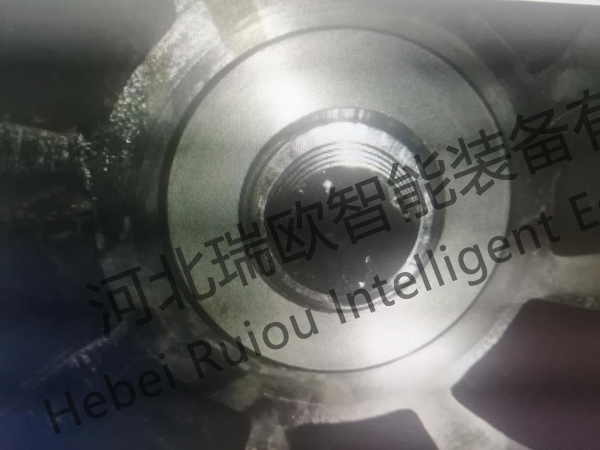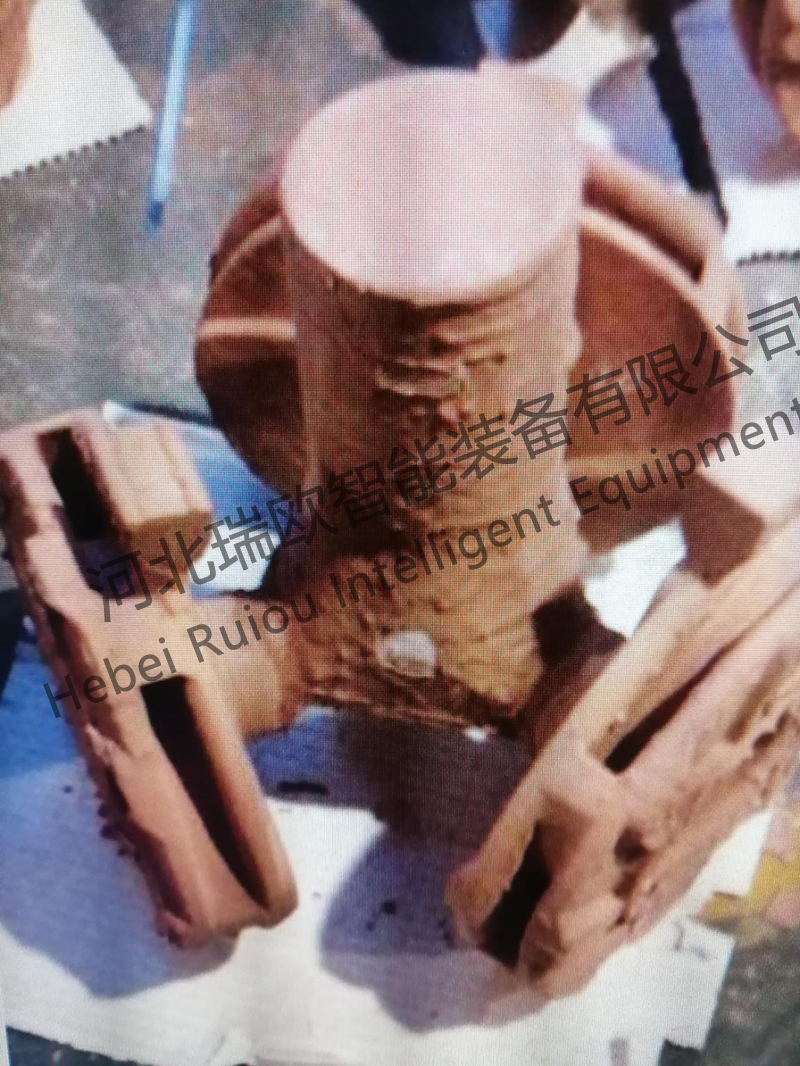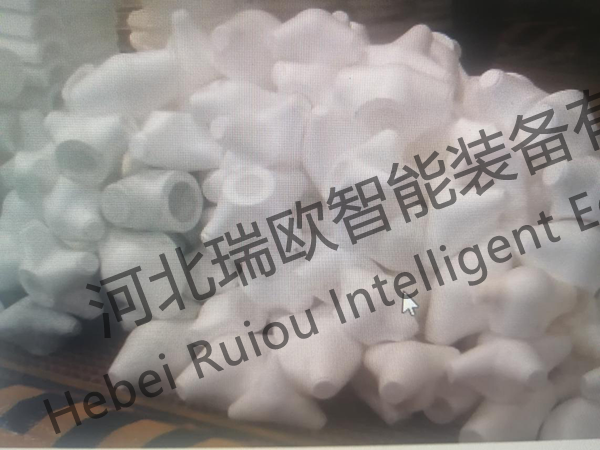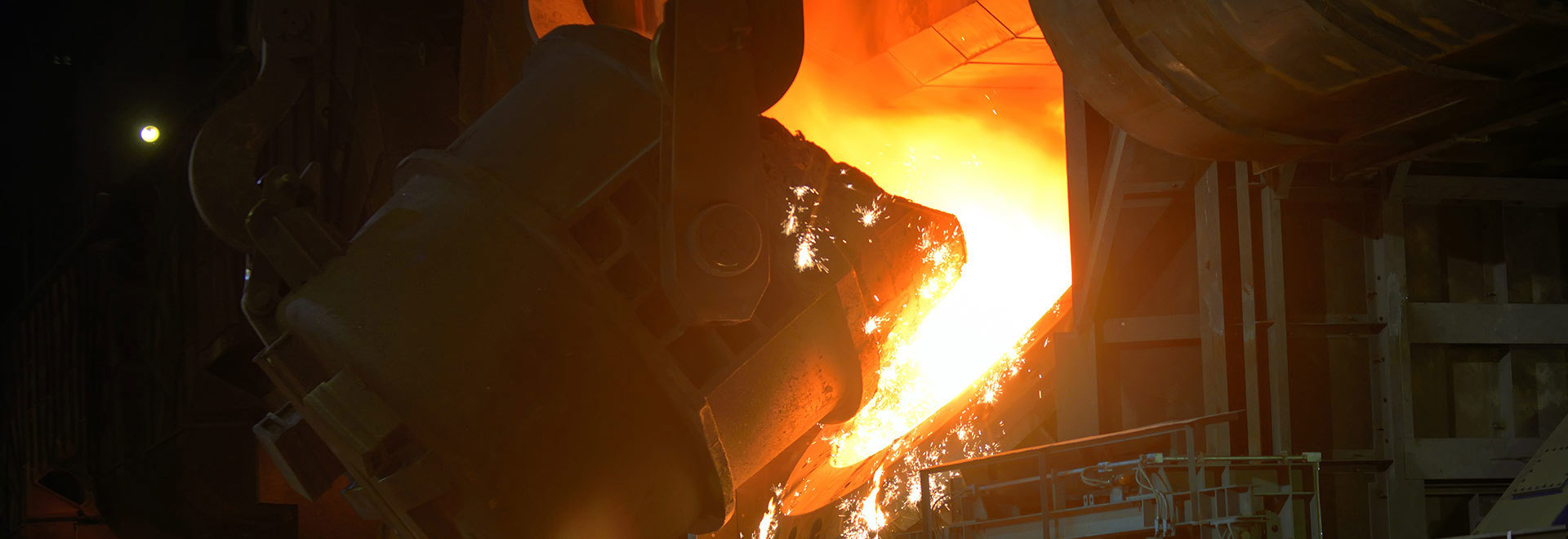Analysis of Lost Foam Casting Process for Water Pump Impeller
Release time:
2022-06-13 16:16
Source:
At present, the domestic pump impeller casting production, mainly using the traditional resin sand molding process for the production of casting products. The process method in the production and manufacturing process, there are modeling labor intensity complex process, model difficult to release easy to damage, a little careless will cause casting structure and size instability, poor surface quality, casting processing allowance, production and manufacturing accessories high cost many shortcomings.
Casting Technology of Water Pump Impeller Material
Water pump impeller material selected for high chromiumNo. 1 material, for the special high abrasion resistance material, which contains a large number of chromium elements, as shown in table1.
Table1 high chromiumChemical Composition No. 1

high chromiumNo. 1 material after heat treatment has high wear resistance, good toughness, can obtain higher hardness. Such as table2.
Table2 high chromiumNo. 1 Mechanical Properties

White area of water pump impeller model
pre-foaming machine
The steam foaming machine uses the steam temperature to heat and vaporize the foaming agent to generate pressure, and the resin particles expand to form foam particles with honeycomb structure. The density of the pre-foamed particles is controlled by increasing or decreasing the amount of the foaming agent. When the steam type pre-generator is used for foaming, the preheating temperature of the foaming system is adjusted80~85 ℃, adjust the pressure of the steam pipeline to stabilize0.05-0.1MPa(After stabilization), the temperature of the expansion chamber is maintained85-95 ℃, the heating time is adjusted20-30s, holding time5sAbout, the parameter setting is completed, the pre-foaming raw material is added to the expansion chamber and heated in a closed manner.,Advance density22-24g/L.
ImpellerEPS molding process
EPSMolding is the foaming, curingEPSThe particles are filled into the cavity of the metal mold, and the particles are heated to expand again, filling the gaps between the particles, so that the particles fuse with each other to form a patterned process. The pre-foamed particles are first stabilized and then sent to the molding machine. After the mold cavity is filled with the pre-foamed particles through feeding, steam is introduced to soften, expand and fill all voids to form a whole, thus completing the foam model making process.


white mold bonding process
Due to the complexity of the impeller model, it is difficult to foam the whole, it must be divided into several parts respectively foam molding, and then bonding molding. The bonding process of the pattern is a key technology of lost foam casting, and the quality of the bonding directly affects the quality of the casting. White mold bonding requires hot glue stick, hot glue gun, cold glue, repair paste and glue brush, fine sandpaper, etc. When bonding, put the white mold on the assembly platform, and the white mold platform is clean and flat. According to the requirements of the production schedule, prepare the white mold that needs to be bonded, and check the main dimensions of each white mold according to the drawing size to ensure that the quality of each white mold is qualified. Before the white mold is bonded, the quality of the white mold needs to be checked. For white molds with small defects on the surface, repair paste can be used for repair. The repair cream should be applied with a smooth transition. Cold glue bonding is suitable for large-area white molds. When using, glue must be applied on both sides. The glue should be evenly brushed. Leave it to air for half an hour, then close it up. After pressing for a while, move it to the empty position to dry and dry.10More than minutes with a certain bonding strength, placed in a drying room for drying.
White mold drying process
In the application of lost foam casting process, the white mold drying technology is widely used mainly in thermal resistance heating drying, high temperature steam heating drying and so on. In addition, there are many new technologies such as solar heating, geothermal heating, air energy heat pump heating, freeze drying, microwave drying, etc., but most of these new technologies are in the theoretical research and experimental stage and there are no cases of mass production and application.
Water pump impeller lost white mold drying combined with the actual situation of the company, after a variety of drying technology research experiments, taking into account the operating cost and stability and other factors, finally determined the circulating hot air drying unit and steam boiler combined high temperature steam heating drying.
The circulating hot air dryer device is mainly composed of a radiator, a fan, a motor, a temperature sensor, a humidity sensor, a ventilation dehumidifier, and a waste heat absorption system.
The application of hot air drying technology for white mold drying, drying room temperature uniformity, high drying efficiency, stable effect, white mold in the drying process of small structural deformation, the technology is widely used.
White mold brush coating process
Coating is the most important part of the lost foam casting process, is one of the early elements of the success or failure of the lost foam casting process, it can be said that the success of the coating, the lost foam process is half successful.
The main function of the lost foam casting coating is:
1)A shell is formed to improve the strength and rigidity of the white mold and prevent the surface damage of the model and the deformation of the vibration modeling and negative pressure shaping white mold during the sand adding process.
2)Improve the anti-erosion ability of the surface of the white mold, play an isolation role during pouring, and separate the metal liquid from the mold.
3)Play the role of exhaust, to prevent the casting to produce pores, carburizing defects.
In order to ensure that the coating can achieve the above effect, the special coating for the lost vanity mold should have strength, air permeability, fire resistance, insulation, coating hanging, suspension, etc.
The mixing of water pump impeller lost-form coating is weighed according to the weight of the prepared dry powder coating.About 70% of the weight of tap water is added to the paint mixing tank, and then the required dry powder paint is also added to the mixing tank for stirring. Stirring speed according400r/minThe speed of the first fast mixing for one hour, and then in accordance with200r/minThe speed of the slow stirring20After stirring, connect the paint to the paint tank for use. The paint that is stirred each time should be measured with the degree of Bomea, and the measurement scale should be controlled1.7-1.8BeWithin the scope, if it does not meet the requirements, add water or paint according to its numerical value, and stir again until it is qualified. When painting, first check whether the white mold is intact. If there are cracks, cracks, and other defects, shall not be used. Before making the coating, it is necessary to check whether the quality of the coating liquid is qualified. If there is precipitation, it needs to be stirred evenly. If there are many bubbles on the liquid surface, it must be stirred to eliminate foam. Corrupt and deteriorated coatings shall not be used.The coating is mainly made by soaking and brushing method. The white mold is manually pressed into the coating tank. After the coating submerges the model, the white mold is put forward and air-dried more than the coating. After the coating is leveled and the coating is uniform, it is placed on the drying rack and sent to the drying room for drying treatment. White mold generally needs to be brushed2-3secondary coating, coating thickness control in1.2-1.5mmWithin the scope, the riser system shall be painted at least three times, and the thickness shall be controlled2-3mmWithin range. The coating thickness on the white mold shall be uniform, and shall not be exposed to white, crack, bubble or local accumulation. There shall be no paint in the hole where the embedded parts are placed. When the paint is accidentally applied, it must be sanded.

Formulation Principle of Black Area Lost Matrix Scheme for Water Pump Impeller
The impeller is an important part of the water pump, and the design principle of its casting process is carried out according to the design concept of sequential solidification. High chromium alloy material crystallization temperature range is wide, in the process of solidification is easy to form coarse grains, tend to paste solidification, large shrinkage, low thermal conductivity, brittleness, casting process is very poor, in the casting production process is prone to hot and cold cracking tendency and shrinkage, shrinkage and other casting defects. In addition to the influence of process characteristics, the tendency of casting defects caused by the properties of the material itself is more serious, mainly reflected in shrinkage, shrinkage, thermal cracking, deformation, leakage of pressed parts, etc.
In order to ensure the quality of impeller casting, the scheme should first ensure the casting molding and minimize the occurrence of various casting defects. ConsiderEconomyBenefit,Improve the process yield, white mold how to group type, to achieve a reasonable group casting, improve production efficiency while reducing production costs. Consider facilitating manual operation, reducing labor intensity and environmental protection.
The pouring position of the casting refers to the position of the casting in the mold when pouring. The pouring position needs to be determined according to the structural characteristics, weight, size, technical requirements, casting material characteristics, casting method and production workshop conditions of the parts. The pouring position of the lost vanity mold should also be conducive to the arrangement of castings, convenient for the support and handling of the white mold, and can be reinforced in some parts of the white mold to prevent the deformation of the white mold.
The correct choice of parting surface and pouring position can ensure the acquisition of sound castings, and make modeling, cleaning, etc. more convenient and efficient, in the preparation of casting process, often at the expense of one another, parting surface and pouring position can not solve all the casting contradictions, which requires the preparation of personnel according to the specific actual situation to find out the main contradictions, in solving the main contradictions while taking into account other contradictions.
According to the structural characteristics of the pump impeller, the edge of the water path of the pump impeller is selected as the parting surface, so as to ensure the simple production of the model and the convenient operation of the modeling.
The gating system is the channel that guides the liquid metal into the cavity when pouring the molten iron, and the gating system is also called the gate. General gating system has external gate, straight gate, cross gate, sprue four parts.
12) Top pouring
The inner runner is located at the top of the casting, so that the molten metal has the top surface of the casting to flow into the cavity, which is easy to fill, which is conducive to the formation of a bottom-up solidification sequence of the casting, with good feeding effect, and fast pouring speed, which is conducive to preventing box collapse, insufficient pouring and cold isolation defects. But it is difficult to control the flow of liquid metal, easy to make.EPS hot joint residue is involved in the casting, which increases the carbon of the casting.
2)SidePouring
The inner runner is located at a certain height in the middle of the casting, and is generally injected from the largest projected area of the casting, which can shorten the distance of the inner runner. At the same time, it has the advantages and disadvantages of top casting and bottom casting, and is widely used in production. It is suitable for all kinds of medium and small castings with uniform wall thickness and low height. However, carbon defects in cast castings are often measured.
32) Bottom pouring
The inner runner is located at the bottom of the casting. The liquid metal enters the cavity more smoothly, the filling speed is slow, and the metal oxidation is small, which is conducive to the discharge of gas in the cavity, but is not conducive to feeding. Carbon defects are prone to appear on the upper surface of castings, especially for thick and large parts. The bottom pouring process is most conducive to metal filling, and the bottom pouring method should be used for thick and large castings.
The riser is a liquid metal used in the mold to store the liquid metal and to feed the casting when it is formed. The riser function prevents the casting from shrinkage and porosity, and has the effect of exhaust and slag collection.
According to the characteristics of the pump impeller and the characteristics of our company's high chromium materials, as well as the actual situation, the preliminary design of the pump impeller gating system isSideCast, closed structure.


Related News










